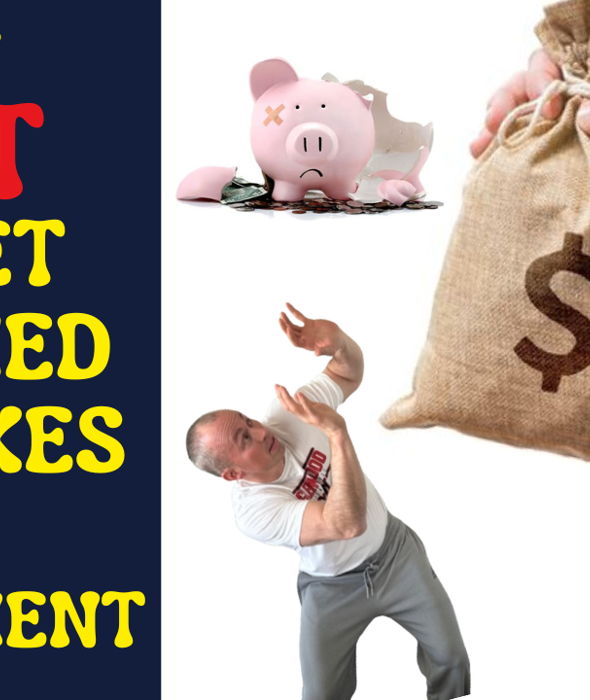
Share this Post
How to Avoid Getting Crushed by Taxes in Retirement
This is a great question that a federal employee asked me recently. The answer is relatively simple – show very little income on your tax returns. The key is understanding how different types of investments are taxed and where you can control your income.
In retirement, you can elect to take distributions from different accounts in whatever way would be most beneficial to you. Let me explain…
FERS is a Three-part System
Because the federal employee retirement system (FERS) is intended to be a three-part system, approximately one third of a retiree’s income is meant to come from investments while the other two thirds come from the FERS annuity and Social Security. While these latter two income streams are fixed and don’t offer flexibility in tax treatment; the income from the investment portion does.
This means that the focus for federal employees should be on where they derive their investment income. This is also known as “asset location,” which involves investing (or locating) your assets in these three basic types of accounts: taxable, tax deferred, and tax-free.
Asset Location: Taxable Accounts
A taxable account is one that is not in a tax shelter like an IRA, Roth IRA or 401(k). These funds are taxed every year as the funds grow and can also be taxed when shares are sold. One common way of investing funds in a taxable account is to buy stocks or bonds (or a stock or bond mutual fund or ETF). Bonds make money by paying the holders of the bonds interest, which is taxed as ordinary income. Stocks generate income in one of two ways:
- Capital gains – Income is taxed at long term capital gains rates as long as the stock is held for 12 months or longer. Capital gains are taxed in the year they are realized. Long term capital gains (LTCG) rates will be 0% or 15% for most federal retirees. Tax filers in the 12% income tax bracket pay 0% on their LTCG while filers in the 22% tax bracket and above will pay 15% on LTCG as long as income is below $518,900 for the year.
- Dividends – Dividends are taxed in the year they are received; note that qualified dividends are taxed at long term capital gains rates.
Asset Location: Tax-deferred
Tax-deferred assets are the most common for federal employees as well as most employees with a company retirement account. The Thrift Savings Plan and a traditional IRA are tax-deferred accounts. The benefit to this type of account is that you don’t pay income taxes on your contributions, but on your distributions. Therefore, any distributions from your TSP are considered taxable income.
Federal employees’ TSP is likely to be their largest retirement asset because it tends to be people’s default savings account and the location for all government matching. There is nothing wrong with TSP being your biggest asset as long as it’s not your only asset. The issue arises when it is the only investment you can draw from in retirement. If that’s the case, you have no control over your income because all of your distributions are considered taxable income.
Asset Location: Tax-free
The most common income-tax free accounts are the Roth IRA and Roth TSP. Contributions to both of these accounts take place after taxes have been paid and they come out tax-free in retirement, as long as it is held for five years or longer and you are age 59.5 or older.
How will multiple types of investment accounts benefit you in retirement?
Note that long term capital gains rates can be drastically lower than ordinary income rates. For example, a retiree in the 12% income tax bracket will pay 0% on LTCG. Another example is a retiree could be in the 32% tax bracket but pay 15% on long term capital gains. The tax rate of Roth IRAs (0%) is drastically different from the other two.
In other words, if it is most beneficial to pay taxes in a given year due to being in a low tax bracket, you would want to take distributions from your IRA or TSP. Why would it be beneficial to pay taxes? There are many reasons that it might benefit a retiree to pay taxes in a given year, but the simplest is that the retiree may be in a lower tax bracket than they would normally be in.
But if you have a year with higher income than normal, you would want to take distributions from your taxable accounts or tax-free accounts because the taxable account could have a lower tax rate than the IRA and the Roth distribution would be income tax free.
The bottom line: The best way to avoid getting crushed by taxes in retirement is to hold multiple investment accounts that are taxed differently. Invest with the future in mind!
Having investments in all three types of accounts allows you to have some control over taxation of your taxable income, which I believe everyone could benefit from. This is a key aspect of financial planning that I help clients with. You are welcome to schedule an introductory call if you would like my help on your retirement journey.
Brad Bobb, CFP® is the owner of Bobb Financial Inc, and an expert in retirement planning for federal employees.
